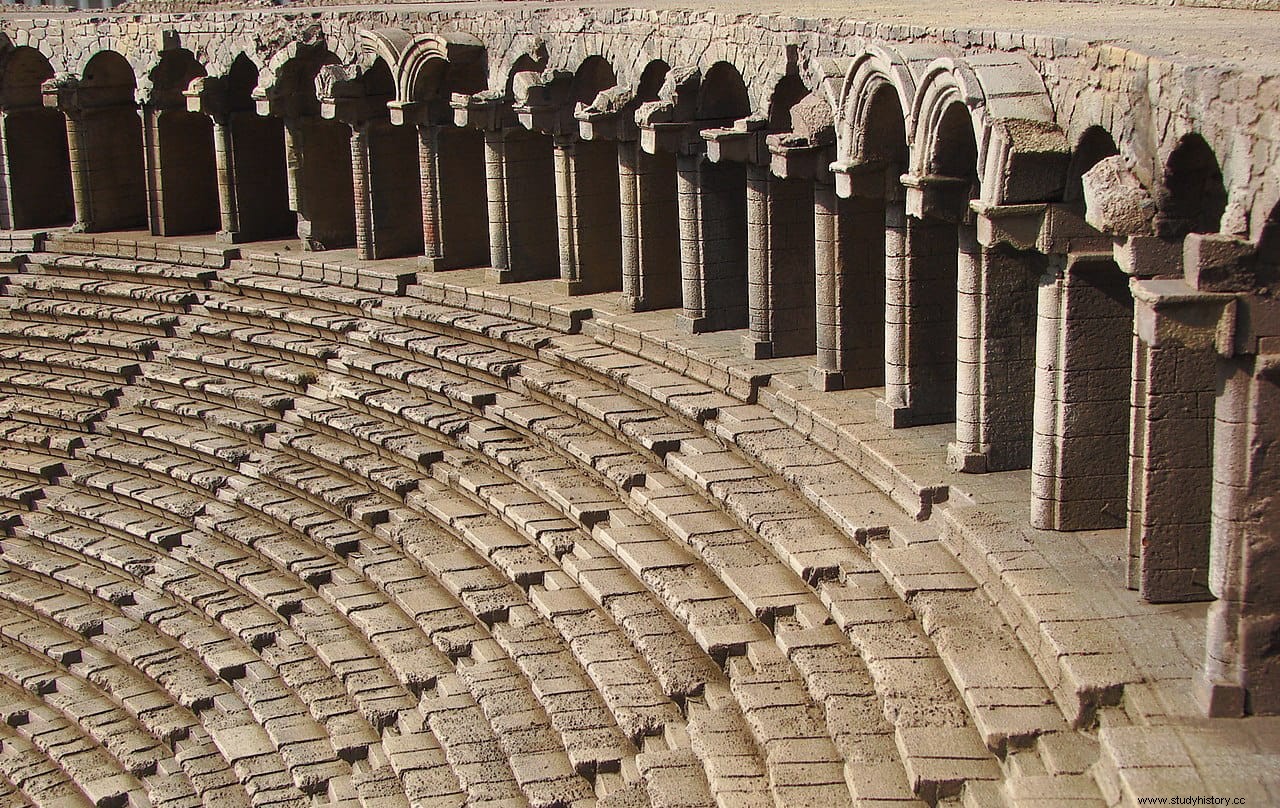The ancient city of Aspendos (today Belkiz), located about 40 kilometers east of Antalya in Turkey, was founded according to tradition by Greeks from Argos.
Throughout antiquity it changed hands on many occasions, although it always remained the most important city in the Pamphylia region. The Romans built a great theater there, today considered the best preserved in the world. Only 11 other Roman theaters keep the stage standing (the Scaenae frons located behind the stage), two of them in Spain.

The city was dominated first by the Lycians and then by the Persians, who conquered it in 546 BC. Athens reconquered it in 465 BC. incorporating it into the Delian League, falling back under Persian rule in 411 BC. Alexander the Great captured it in 333 BC. and finally the Romans took it and looted it in 190 BC
The Aspendos theater was discovered in 1871 by Count Landskonski. It was built during the reign of Emperor Marcus Aurelius between 161 and 180 AD. The architect was Zenon , a local Greek, who designed a structure with a diameter of 96 meters and a capacity for around 15,000 spectators. The sculpture of Zeno is still preserved, with an inscription of thanks from the inhabitants of the city.

Following the tradition of Greek theater, part of the cavea was built on the slope of the hill where the acropolis stands, while the rest is supported by vaulted arches, reaching a height similar to that of the scene and giving it a compact appearance. , as if it were a fortress. It has 39 rows of seats.
In some of these have been found inscribed names , which seems to indicate that they were reserved. 58 holes were also found in the upper part of the enclosure, where the masts that supported the velarium that protected the spectators from the elements were installed.

Despite the decline of the city at the end of the Roman period and during the Byzantine era, the Seljuk Turks kept it standing, restoring it and using it as a caravanserai (a kind of old inns for merchant caravans). In the 13th century, the scene was used as a palace, which contributed to its preserving practically intact .
Only 11 other Roman theaters in the world maintain the entire scene or a good part of it. Among these are the Roman Theater of Mérida and that of Acinipo in Málaga, very close to Ronda. The Sabratha Theater in Libya, restored after World War II, was considered by some authors to be the most illuminating preserved example of scaenae frons , although unfortunately it has suffered the consequences of the current armed conflict.
